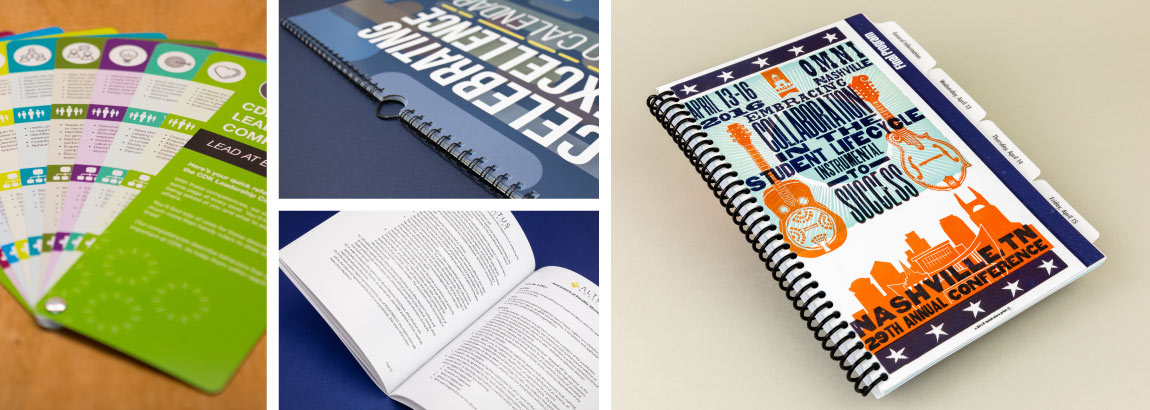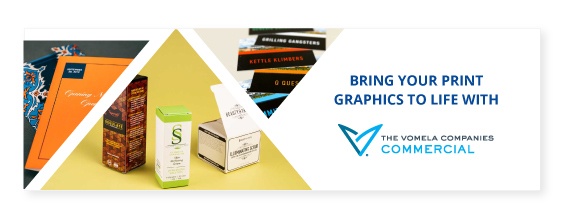Binding is so much more than just “stapling” the pages together. There are options, and some are more appropriate for specific jobs than others. When designing your piece, it’s best to take the binding into consideration.

Saddle Stitching
The binding method most people think of for brochures is called saddle stitching. It’s the (usually) two staples in the middle of a brochure or small booklet. The name saddle stitch comes from the way the machine holds and moves the signatures of your job. Each signature is “nested” inside the others.
Saddle stitching is best used for any job between 8 pages and up to 1/4” thick. How do you know what the thickness of your final product will be? Ask your account manager for help. It all depends on the type and weight of the paper stock you will be printing on. (For a typical text weight this would be around 96 pages.)
Besides the physical capabilities of the staples, saddle stitching is not recommended for larger jobs because of creep. Unlike your weird ex, this creep is a technical term that describes what happens when you nest too many signatures together. The inner signatures will begin to push out farther than the outer signatures, so that when the final job is trimmed on the edges, some of the text or graphics could be cut off.
There is software that can help combat creep by adjusting the pages, but at large page counts even the software has its limitations. At a certain point, it’s time to look at alternative binding methods.

Perfect Binding
For slightly larger jobs of 1/8” thick up to huge books at 2” thick, perfect binding is the method that produces a spine on the outer edge. Named for the perfect cut of the pages, this method stacks signatures instead of nesting like saddle stitching. (This eliminates that pesky creep problem in larger books.) Perfect bound jobs are glued at the spine.

Coil Binding
Pretty self-explanatory, coil binding is when - you guessed it – a plastic or metal wire is coiled and threaded through small holes on the outside edge of the book. There isn’t much of a physical limitation for coil binding, but it doesn’t look great on a very small number of pages or a book thickness over 1.5 inches.
Of course, it all depends once again on the stock you are using. Your 24 laminated cards from the beginning of this article would be a great fit for coil binding. Your account manager can work with the production team to help you determine the best fit for each job.


